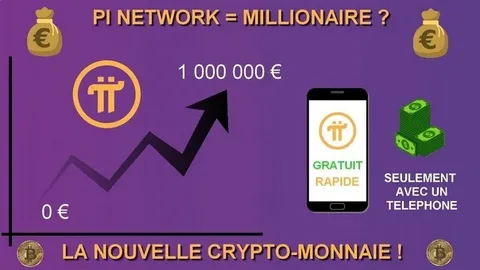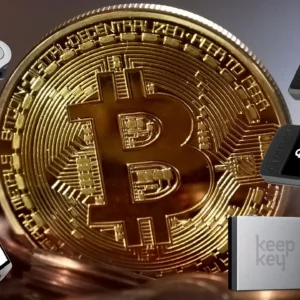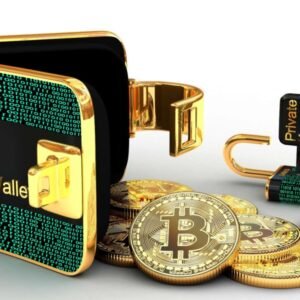Among the numerous digital currencies emerging in the market, Pi Coin has gained significant attention for its unique mining approach and ambitious vision. As one of the most discussed crypto innovations, Pi seeks to provide a user-friendly, energy-efficient alternative to traditional mining models.
In this guide, we’ll explore the origins, technology, mining process, use cases, and future prospects of Pi Coins. Whether you’re new to cryptocurrency or an experienced investor, this article will provide an in-depth look at one of the most talked-about projects in the digital finance space.

1. Understanding Pi Coin: The Origins and Vision
Pi Coin was launched in 2019 by a team of Stanford graduates who sought to make cryptocurrency more accessible to everyday users. Unlike Bitcoin, which requires expensive mining rigs and consumes vast amounts of energy, Pi Coins introduced a mobile-based mining system that allows users to earn coins with minimal resource consumption.
The project was founded by Dr. Nicolas Kokkalis, Dr. Chengdiao Fan, and Vincent McPhillip. Their primary goal was to create a digital currency that empowers ordinary people, preventing early adopters or large corporations from monopolizing the supply. The Pi Network operates on a unique consensus algorithm called the Stellar Consensus Protocol (SCP), which ensures security and decentralization without high energy costs.
Why Is Pi Coin Considered One of the Top Crypto Innovations?
- Mobile Mining: Unlike traditional Proof-of-Work (PoW) cryptocurrencies, Pi can be mined using a smartphone without draining battery life or requiring significant processing power.
- Inclusive Economy: The project aims to build a global, decentralized financial system where anyone with a smartphone can participate.
- Energy Efficiency: Since Pi does not rely on intensive computing power, it offers a sustainable alternative to Bitcoin and Ethereum.
- User Growth & Engagement: The Pi Network has grown rapidly, with millions of users worldwide actively participating in the mining process.
2. How Pi Coin Works: Mining and the Pi Network Model
One of the main reasons Pi is considered one of the most intriguing crypto innovations is its mining model. Unlike Bitcoin and other Proof-of-Work (PoW) cryptocurrencies that require specialized mining rigs, Pi Coins relies on a consensus algorithm that enables mining through mobile devices.
Mining Pi Coin on a Smartphone
Mining Pi Coin is incredibly simple and user-friendly. Users can mine by simply tapping a button on the Pi Network app every 24 hours. The mining process doesn’t consume any physical resources like electricity or computational power. Instead, it relies on a social security circle where users validate transactions through trust-based networks.
The mining rate initially started at 3.1 Pi per hour but has since decreased as more users joined the network. This deflationary approach ensures scarcity and long-term value. The mining process consists of four key roles:
- Pioneers: Regular users who log in daily to mine Pi Coins.
- Contributors: Users who build trust circles by verifying other users.
- Ambassadors: Those who invite new users to join the Pi Network.
- Nodes: Advanced users who run decentralized software on their computers to validate transactions.
The Role of the Stellar Consensus Protocol (SCP)
Unlike Bitcoin’s PoW or Ethereum’s Proof-of-Stake (PoS), Pi Coins operates on the Stellar Consensus Protocol (SCP). This algorithm allows transactions to be verified by a network of trusted nodes, ensuring security while minimizing energy consumption.
- Security Circles: Each user is required to create a security circle of trusted members, reducing the risk of fraudulent transactions.
- Decentralization: The network is designed to remain decentralized by distributing trust among users rather than relying on a central authority.
- Scalability: SCP enables fast and low-cost transactions, making Pi Coins a viable option for everyday transactions.
3. Use Cases and Real-World Applications of Pi Coin
As Pi Coin progresses towards full decentralization and mainnet launch, many enthusiasts are speculating about its potential use cases. While currently in its enclosed mainnet phase, Pi has the potential to be integrated into various industries.
Potential Use Cases of Pi Coin
- Peer-to-Peer Transactions: Users can send and receive payments without the need for traditional banking systems.
- E-commerce & Online Marketplaces: Some platforms are already accepting Pi Coin as payment, and more businesses may integrate it as adoption grows.
- Remittances & Cross-Border Payments: Since Pi Coins operates on a decentralized network, it could facilitate faster and cheaper international transfers.
- Smart Contracts & Decentralized Applications (DApps): Developers may eventually build applications on the Pi Network, similar to Ethereum’s ecosystem.
- Tokenized Digital Assets: Pi Coin could be used for NFT transactions, in-game purchases, and other digital assets.
Challenges and Limitations
While Pi Coin shows promise, several challenges must be addressed before it can become a widely accepted cryptocurrency:
- Lack of Liquidity: Currently, Pi is not listed on major exchanges, limiting its tradability.
- Regulatory Uncertainty: Governments and financial regulators may impose restrictions on new cryptocurrencies.
- Mass Adoption: For Pi to succeed, businesses and users must recognize and adopt it as a legitimate payment method.
Despite these challenges, the growing community and continuous development of the Pi Network suggest that Pi Coin could become a major player in the crypto space.
4. The Future of Pi Coin: Roadmap and What to Expect
The future of Pi Coin remains a hot topic among cryptocurrency enthusiasts. With its unique mining system and a rapidly expanding community, Pi has the potential to be a game-changer in the world of crypto innovations.
Pi Network’s Roadmap
The Pi Network has outlined a three-phase roadmap:
-
Phase 1 (Beta Stage) – 2019:
- The project was launched with a mobile mining app.
- Users could start mining Pi with their smartphones.
-
Phase 2 (Testnet) – 2020-2022:
- Nodes were introduced to test the network’s security and scalability.
- Developers worked on improving the infrastructure before the mainnet launch.
-
Phase 3 (Mainnet) – 2023 and Beyond:
- The enclosed mainnet phase was launched, allowing users to transfer Pi within the ecosystem.
- Plans for a fully open mainnet where the Coin can be traded on exchanges.
Will Pi Coin Have Real Value?
The value of Pi Coin will ultimately depend on supply and demand, market adoption, and the overall success of the Pi Network’s ecosystem. If businesses and developers embrace Pi , it could become a valuable asset in the digital economy.
Some key factors that will influence the Coin’s success include:
- Exchange Listings: Once Pi Coin becomes tradable on major exchanges, its price will be determined by market forces.
- Merchant Adoption: If businesses start accepting the Coin as payment, its usability and demand will increase.
- Technological Advancements: The continuous development of the Pi Network’s blockchain infrastructure will play a crucial role in its long-term viability.
Conclusion: Is Pi Coin the Future of Cryptocurrency?
Pi Coin is undoubtedly one of the most discussed crypto innovations, offering a unique, user-friendly approach to digital currency mining. Its vision of financial inclusion, sustainability, and decentralization has attracted millions of users worldwide. While challenges remain, the project’s potential is undeniable.
Whether Pi will become a mainstream cryptocurrency or remain a niche project depends on its adoption, regulatory landscape, and technological advancements. As the Pi Network continues to develop, it will be interesting to see how it shapes the future of digital finance.
What do you think about Pi Coin? Do you believe it has the potential to revolutionize the cryptocurrency industry? Share your thoughts in the comments below!






